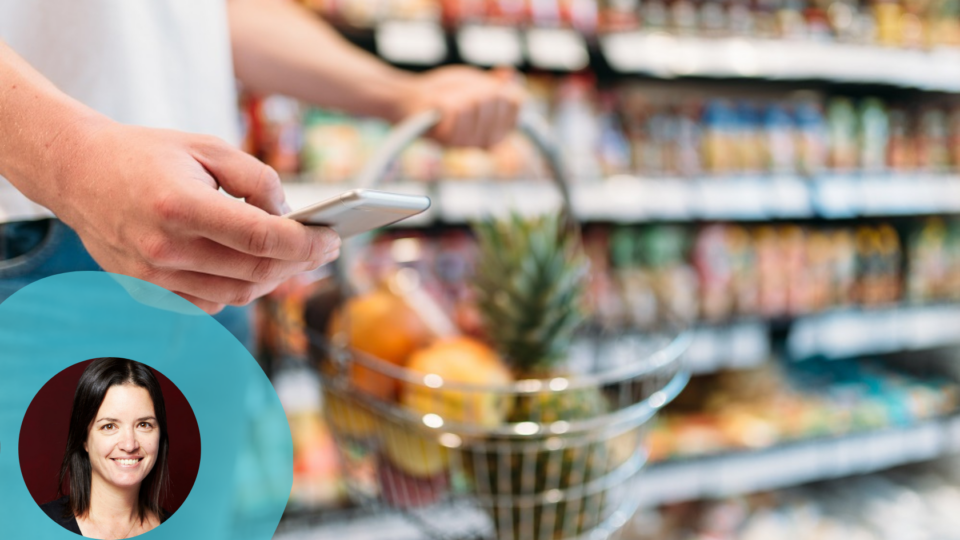The U.S. food retail industry comprises nearly 63,000 grocery stores and supermarkets, which amounted to $765.98 billion in sales in 2021. To stay competitive, retailers need to create and maintain loyal customers; 43% of customers spend more on brands to which they are loyal. Plus, delighted customers quickly turn into loyal brand ambassadors, helping bring in new customers.
The most common retail loyalty programs offer cash back or points incentives. For example, Target and Kroger offer store savings, coupons and store credit, while Walgreens and Publix have personalized price reductions on birthdays.
When it comes to successful loyalty programs, it’s clear that the top brands understand that personalization is key. It strengthens long-term relationships with shoppers and encourages interaction between the consumers and their most loved brands.
Maximizing Mobile
Personalizing the user experience to enhance customer loyalty is more achievable today than ever before. By providing information that customers need within their personalized loyalty app, retailers strengthen their customer relationships. For example, promotions catered specifically to the individual shopper give them the deals they want on the products they need.
Advertisement
Comparatively, the traditional coupon offering is too time consuming, inconvenient and, frankly, impersonal. Consumers don’t want to spend time searching through a bank of digital coupons, some of which are irrelevant to them. They want convenient offers tailored to their interests, preferences and needs.
Retailers can bring loyalty programs to the next level by adding proximity marketing based on in-store location throughout the journey. By combining individual customers’ locations with a detailed history of their purchases, retailers can push rewards or coupons when the product is in hands’ reach.
Retailers can also simultaneously offer complimentary products when passing by a department. For example, if a shopper picked up some hot dogs in the store, their mobile app can then notify them when they are near the hot dog buns aisle. Smart notifications that are tied into consumer trends and purchase history can amplify the shopper experience. In fact, sending contextualized location-based promotions in real time leads to 4 times better conversions. Even with in-store promotions, timing is everything.
Combining this with loyalty-program data, retailers and CPGs can better understand shoppers’ in-store behavior and path to purchase — whether lingering customers or decisive ones — leading to targeted hyper-personalized offerings and increased app engagement.
Additionally, retailers can focus offers on their private labels or “sell” real estate channels in the mobile app. CPG brands, or the private label owners in the organization, can then pay for hyper personalized and contextualized offerings, boosting their promotion potential and conversions. For example, a shopper that lingers by a shelf of items for a long period of time may indicate that they are debating which product to choose. This is the ideal time to either push a higher-margin item or offer a promotion to ensure the sale.
Personalization Drives Loyalty
The only way to implement this model is to have an in-store location solution. These solutions allow retailers to target their customers and market them individually, all in real time. Whether it be shopper-specific promotions, lingering by products for extended periods of time or triggering promotions when certain shoppers enter specific areas, in-store location enables retailers to ensure a long-lasting connection that leads to more mobile app engagement and promotion conversions.
Retailers must be wary and only implement solutions that are intuitive and reliable enough for shoppers to use, and be able to implement directly into existing retailer loyalty applications. Whether the retailer already uses a coupon app, a Scan & Go solution or a smart cart system, the platform must be able to integrate easily so that existing shoppers won’t experience a hard transition. Additionally, solutions that integrate into existing apps must be easy for retailer developer teams to work with and manage.
When implemented efficiently, these solutions help guide customers to items they need in real time or make way for proximity promotions that give shoppers access to desirable items. This creates a quicker, more personalized and convenient shopping experience.
Boosting Your Bottom Line
Customers deserve a personalized and convenient shopping experience. Companies that succeed in delivering great shopping experiences will have a higher chance of securing brand loyalty.
With the help of an indoor positioning system, retailers can effectively personalize their offerings and tailor them to fit consumers’ immediate needs, creating emotionally connected, loyal patrons — and an increased bottom line.
Michal Kassif is the Head of Marketing at Oriient, leading all marketing and content strategy operations. She has 20+ years of experience working with startups and major food and beverage manufacturers and managing and editing content for television. Kassif previously served as Head of Marketing for Ripples and was also the Digital and Content Manager at Strauss Group, one of the largest food manufacturers in Israel. She also served as the Chief Editor for multiple Lifestyle television shows and was the Newsroom Manager at Channel 10 News (Israel). Kassif holds a BA in Political Science specializing in Journalism and Communications from Tel Aviv University.






